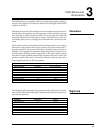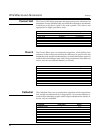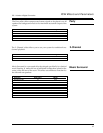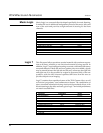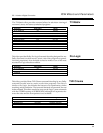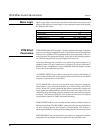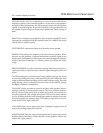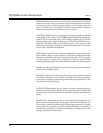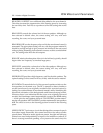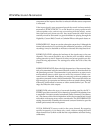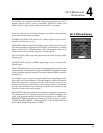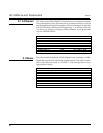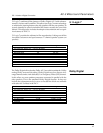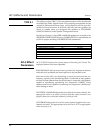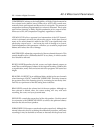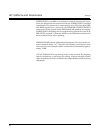
43
DC-1 Version 4 Digital Controller
PCM Effects and Parameters
REAR DELAY OFFSET is an additional delay added to the rear channels.
This delay increases the apparent size of the listening space by increasing
the rear delay time. Feel free to experiment to find the setting that works
best.
REAR LEVEL controls the volume level of the rear speakers. Although we
have selected a default value, the correct setting will vary with each
recording, the room, and your personal taste.
REAR ROLLOFF sets the frequency above which the rear-channel sound is
attenuated. The appropriate setting will vary with the program material. It
should be set high enough to give presence and airiness to the rear sound
without placing distracting instrumental overtones or other sounds behind
you. The settings also affect the side outputs.
ROLLOFF mimics the absorption of the air in the hall and, typically, should
begin with a low frequency to simulate large spaces.
SIDE LEVEL controls the volume level of the side speakers. Although we
have selected a default value, the correct setting will vary with each
recording, the room, and your personal taste.
SIDE ROLLOFF provides a high frequency cutoff for the side speakers. The
optimal setting for this control will vary widely with the source material.
SOUNDSTAGE controls the level of the surround speakers relative to the
front speakers in a dynamic way. The DC-1 attempts to detect whether or
not the sound source was originally encoded from a surround source by
looking for occasional bursts of rear-steered material, and by identifying the
directional orientation of the background sound between strong sounds.
Whenever there is an indication that the source was originally surround
encoded, the Soundstage control automattically reverts to the REAR setting
— which gives the rear speakers full level. The NEUTRAL position attenu-
ates the rear speakers 3dB. The FRONT position attenuates the rear speakers
6dB. The effect is to move the listening position forward in the listening
space.
SPEECH DETECT activates a circuit that distinguishes monaural speech
from other inputs. Essentially, this control turns down the effect to make
speech clearer. Whenever stereo signals are present, the right and left input
channels are used independently as inputs to the ambience synthesis. If
there is a strong monaural speaking voice present at the same time, this



